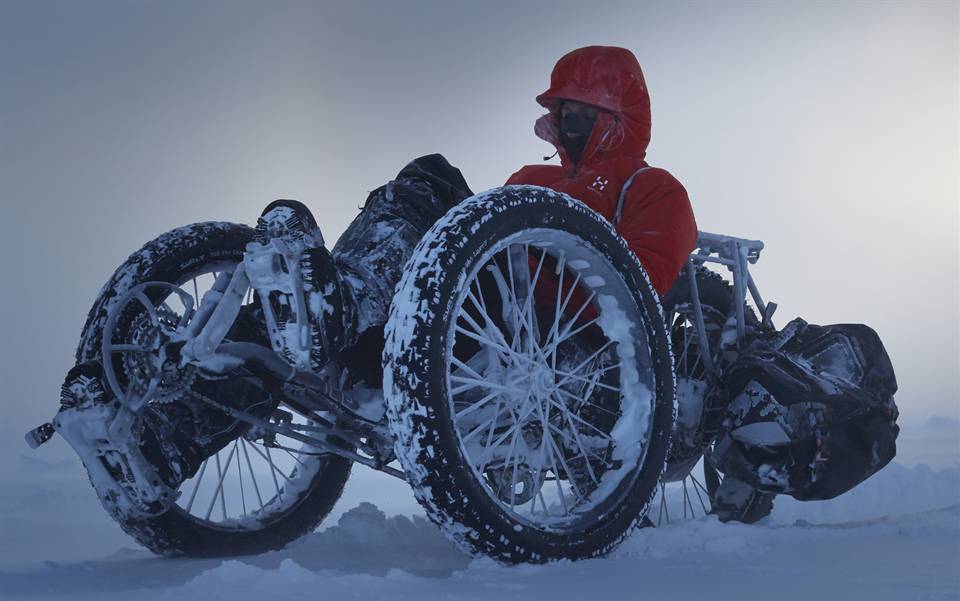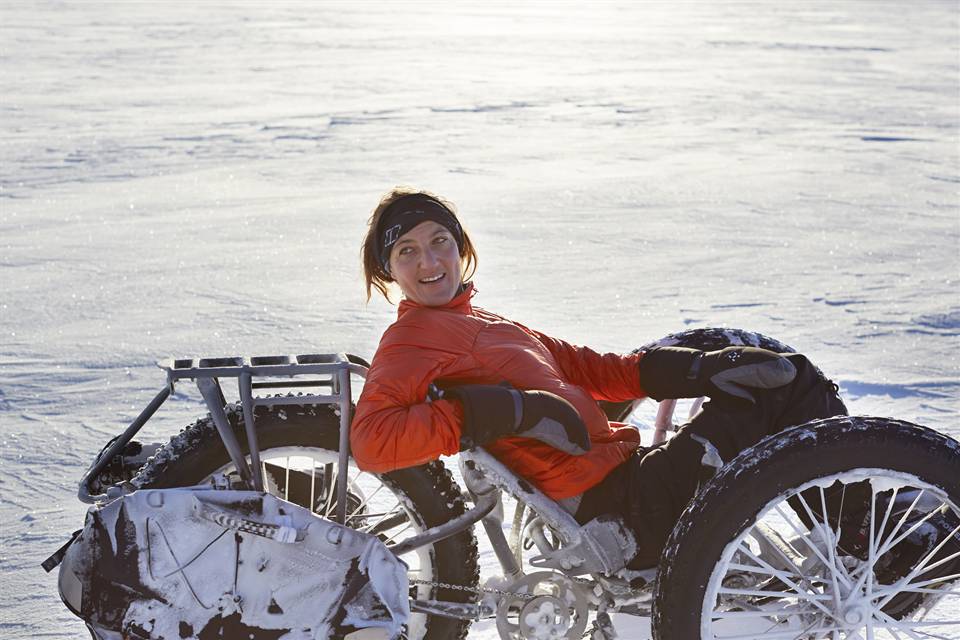
British adventurer Maria Leijerstam became the first person to cycle to the South Pole from the edge of the Antarctic continent today at about 1 a.m. GMT (Dec. 27, 2013).
We reported last week on the 35-year-old’s unique ‘fat trike’ recumbent as she prepared for the expedition, which began on Dec. 18.

Leijerstam’s route started by climbing the Leverett Glacier before heading due south for the Pole some 400 miles ahead.
The route she followed is used by American scientists based at the McMurdo Research Station on the Ross Ice Shelf to transport fuel to the South Pole.
Despite starting days later than her competitors Leijerstam finished ahead of two other riders attempting to go to the South Pole on a different route.
American Daniel Burton and Spaniard Juan Menendez Granados are cycling the most common route from Hercules Inlet to the South Pole on fat bikes, an approach that has been taken before but without success.
The Welsh woman completed her route on the trike in nine days.









